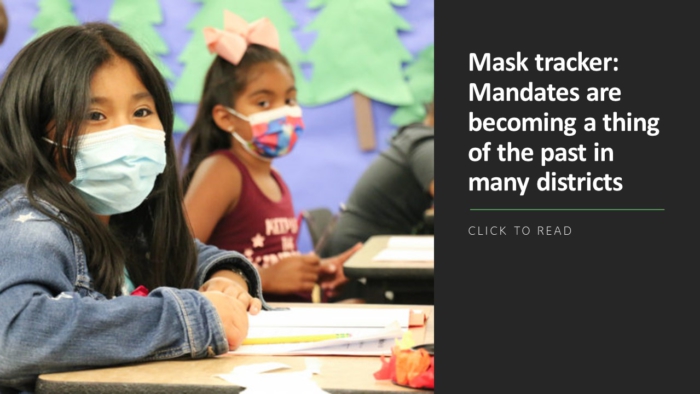Historically low job satisfaction among school principals could trigger a “mass exodus” of building leaders in the coming years, according to a survey released Wednesday.
Job satisfaction is at an “ultimate low” with almost four in 10 principals saying they are likely to leave the profession in the next three years, according to the National Association of Secondary School Principals’ survey, which gauged the impacts of COVID, the polarized political climate and resource needs.
“This survey shows that the principal pipeline is becoming increasingly fractured at all levels, in every region of the country and in all school types,” NASSP President Gregg Wieczorek said. “Recruiting and retaining school leaders will become even more difficult if more is not done to support educators in our schools.”
Among principals’ key concerns are student wellness, mask mandates, vaccine requirements and teacher shortages, the survey found. And more than one-third of principals say they’ve been threatened over COVID safety precautions they’ve taken.
“While this will impact all students, historically marginalized communities, students of color and those who come from low socioeconomic backgrounds will be disproportionately affected by the departure of our strong and dedicated school leaders,” NASSP CEO Ronn Nozoe said. “To prevent this, and the irreparable damage it will cause, we must act now.”
Here’s a breakdown of the survey’s key findings:
1. Prepare for a mass exodus. The number of principals who said they “strongly agree” with being generally satisfied in their job dropped dramatically, from 63% in 2019 to just over one-third this year. And only about a quarter expressed certainty about remaining in their jobs until they retire while around the same number expected to leave “as soon as they can.”
Teacher shortages are a major contributor to principals’ dissatisfaction. Most principals of schools that are majority students of color or low-income are extremely concerned about filling classroom vacancies. More than two-thirds of all principals reported having more difficulty hiring high-quality teachers during the pandemic.
2. COVID’s drastic impact. Not surprisingly, most principals say they have been working longer hours and facing more difficulties on the job than ever before. About half said their roles have changed “a great deal” since the COVID outbreak began.
While only a few said they were overly worried about contracting COVID themselves, many are worried about the health and wellness of their students. Only about one in five say their schools have enough nurses and counselors to support students.
However, the top challenge reported by the most principals was implementing blended and distance learning.
3. Tense political pressures. Alarmingly, more than one-third of principals say they’ve been threatened in-person and online by parents and community members over COVID safety precautions they’ve taken. Consequently, 20% said the threats have increased the likelihood they will leave their jobs.
4. Pre-COVID conditions converge. Heavy workload, state accountability measures and time spent on compliance requirements were the top reasons that would make principals consider resigning.
Only one in four “strongly agreed” that they were getting sufficient support from the central office. And most principals said they wanted more opportunities to connect with principals facing the same challenges.
While most were content with their salary and benefits, fewer than three in 10 said they had adequate resources—including teaching materials and other supplies—to support students. And only about the same number felt district leaders had listened to their ideas about how to spend COVID-relief funding at their school.



